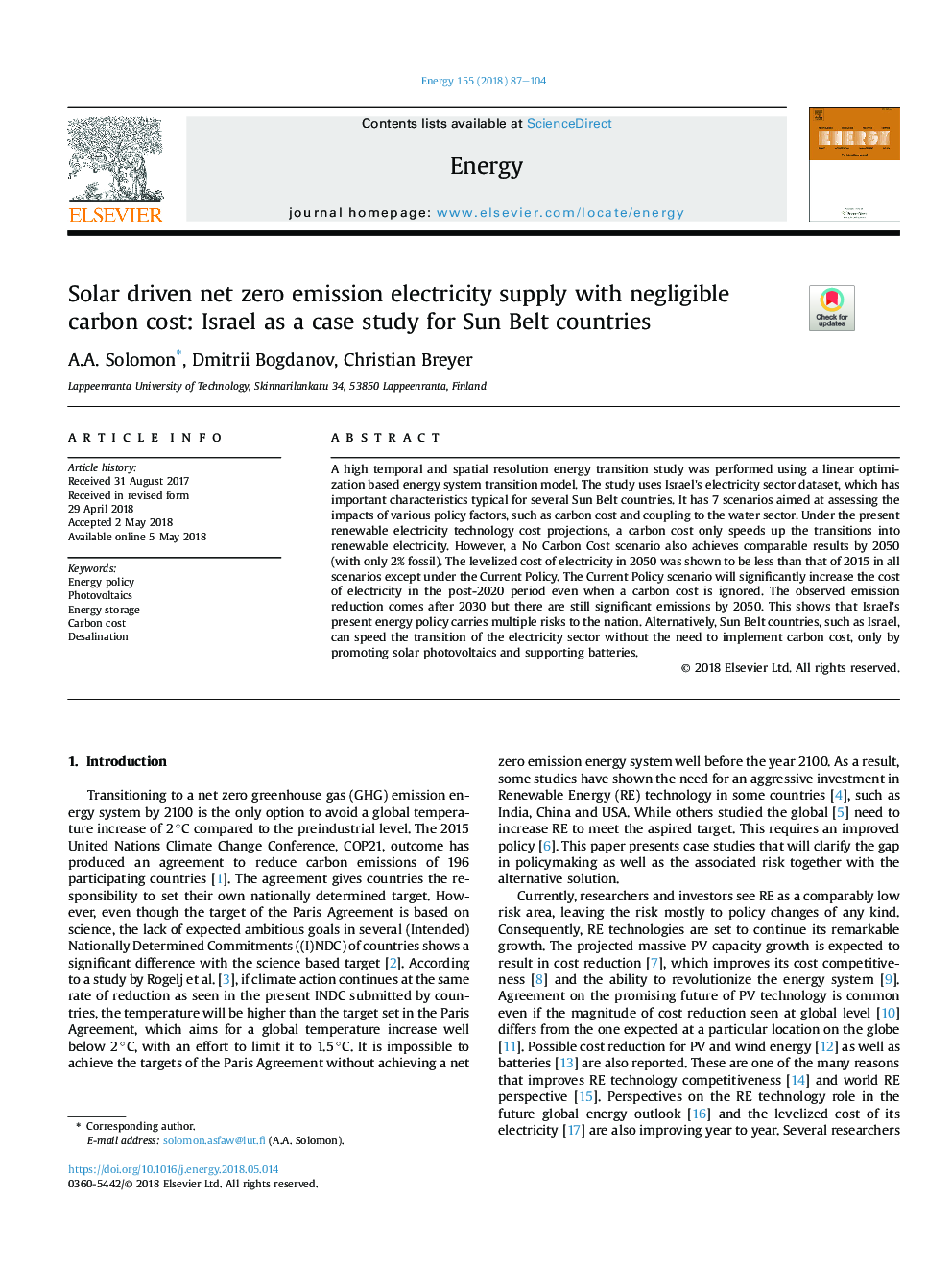| Article ID | Journal | Published Year | Pages | File Type |
|---|---|---|---|---|
| 8071395 | Energy | 2018 | 18 Pages |
Abstract
A high temporal and spatial resolution energy transition study was performed using a linear optimization based energy system transition model. The study uses Israel's electricity sector dataset, which has important characteristics typical for several Sun Belt countries. It has 7 scenarios aimed at assessing the impacts of various policy factors, such as carbon cost and coupling to the water sector. Under the present renewable electricity technology cost projections, a carbon cost only speeds up the transitions into renewable electricity. However, a No Carbon Cost scenario also achieves comparable results by 2050 (with only 2% fossil). The levelized cost of electricity in 2050 was shown to be less than that of 2015 in all scenarios except under the Current Policy. The Current Policy scenario will significantly increase the cost of electricity in the post-2020 period even when a carbon cost is ignored. The observed emission reduction comes after 2030 but there are still significant emissions by 2050. This shows that Israel's present energy policy carries multiple risks to the nation. Alternatively, Sun Belt countries, such as Israel, can speed the transition of the electricity sector without the need to implement carbon cost, only by promoting solar photovoltaics and supporting batteries.
Related Topics
Physical Sciences and Engineering
Energy
Energy (General)
Authors
A.A. Solomon, Dmitrii Bogdanov, Christian Breyer,
